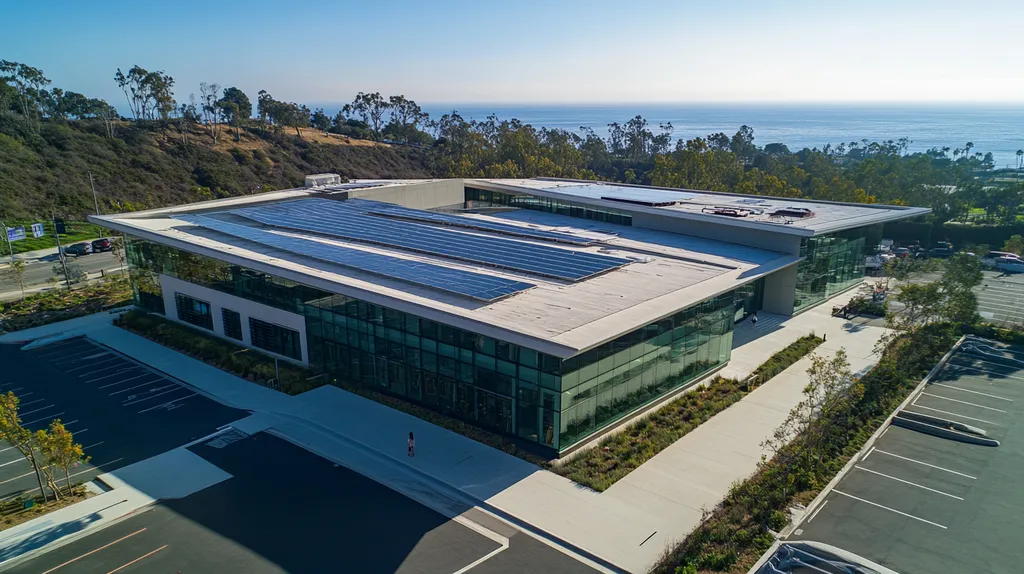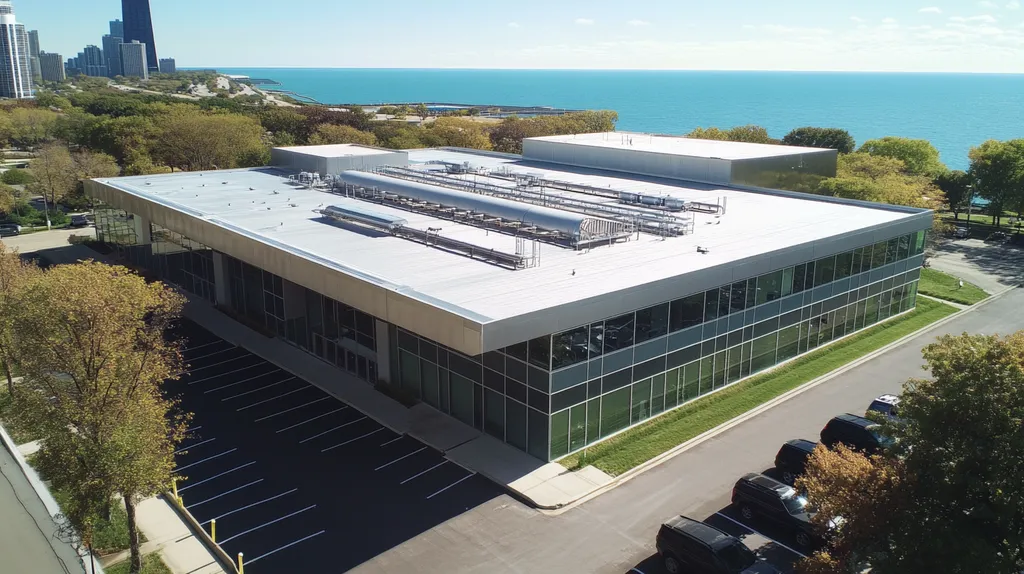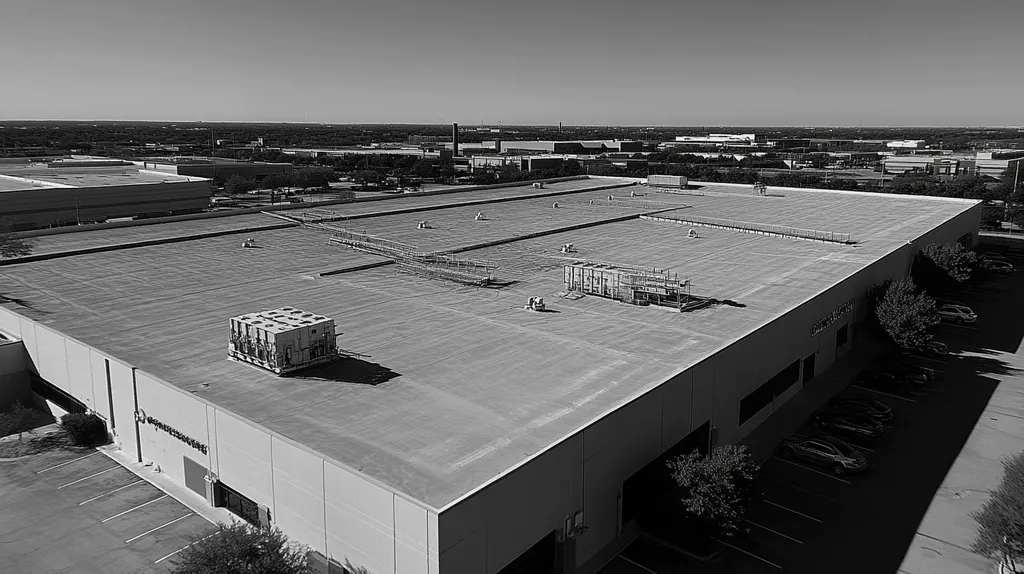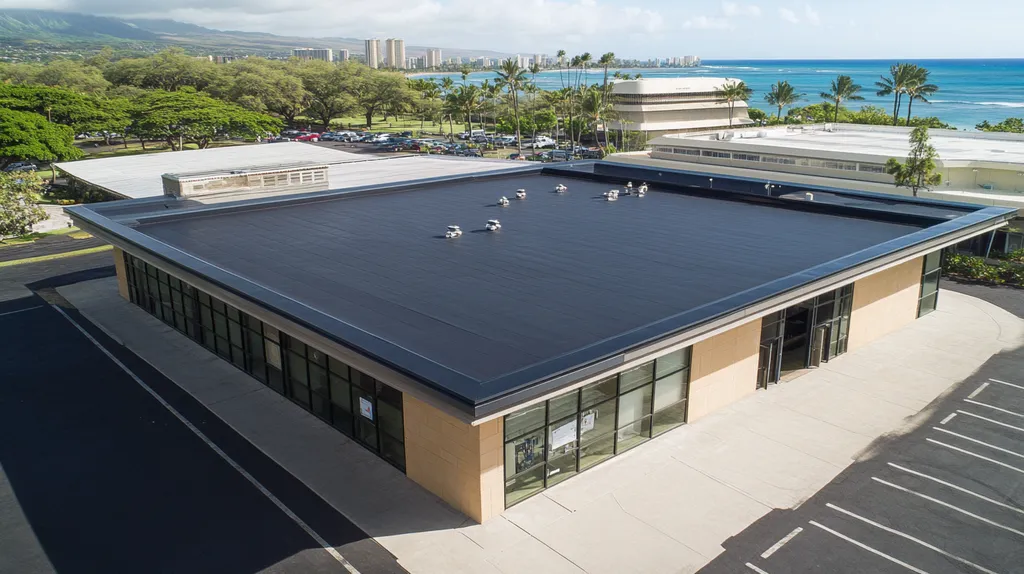Welcome to today’s Battle Royale featuring two roofing heavyweights: “TPO” in the east corner versus “EPDM” in the west!
Tonight’s showdown pits these contenders against each other across six punishing rounds designed to test every aspect of their performance for Labor Costs by Commercial Roof Material Types.
At stake? Millions in potential costs, decades of building protection, and the critical performance demands of modern commercial and industrial facilities.
Our professional judging panel will evaluate each round on technical merit, real-world performance, and value delivery. After all six rounds, we’ll declare our ultimate champion.
Ladies and gentlemen, facility managers and building owners… it’s time to rumble!
ROUND 1: INITIAL COSTS & INSTALLATION
When evaluating commercial roofing systems, initial costs and installation considerations can make or break a project’s financial viability. The distinction between TPO and EPDM installation costs often determines whether a project stays within budget or faces costly overruns. Understanding these differences helps facility managers make informed decisions that impact both immediate expenses and long-term operational costs.
Material Expenses
Material costs represent a significant portion of any commercial roofing project’s budget. TPO membranes typically command higher prices, ranging from $3.50 to $6.00 per square foot, due to their advanced manufacturing process and enhanced UV resistance properties.
EPDM materials generally cost less, with prices between $3.00 to $5.00 per square foot. This lower entry point makes EPDM an attractive option for projects with strict budget constraints.
While TPO’s higher cost includes benefits like superior heat reflection and energy efficiency, the initial material investment remains substantially higher than EPDM alternatives.
For pure material cost considerations, EPDM claims the ADVANTAGE with its lower price point and widespread availability.
Installation Complexity
TPO installation demands specialized expertise and equipment for proper heat welding of seams. These systems typically split costs between 60% labor and 40% materials, with complex roof penetrations significantly increasing installation time and labor expenses. (source: West Roofing Systems)
EPDM installation utilizes simpler adhesive-based or mechanical fastening methods. This straightforward approach requires less specialized training and equipment, reducing labor costs.
The complexity difference becomes particularly evident around roof penetrations, where TPO’s precise welding requirements can extend project timelines.
Due to its simpler installation requirements, EPDM earns the ADVANTAGE in installation complexity.
Project Timeline
Project duration directly impacts labor costs and facility disruption. TPO installations typically require more time due to precise heat welding procedures and mandatory seam testing protocols.
EPDM installations generally progress more rapidly, as the adhesive application method allows for faster coverage and fewer technical delays. Weather conditions have less impact on EPDM installation schedules.
The streamlined nature of EPDM installation typically results in projects completing 20-30% faster than comparable TPO installations.
For project timeline efficiency, EPDM claims the ADVANTAGE with its faster completion potential.
ROUND 1 WINNER: EPDM
ROUND 2: DURABILITY & LIFESPAN
When evaluating commercial roofing materials, durability and lifespan directly impact ongoing maintenance costs and replacement intervals. A single premature roof failure can cost facility managers hundreds of thousands in repairs and business disruption. Understanding how TPO and EPDM perform over time helps decision-makers balance short-term budget constraints against long-term facility protection.
Material Longevity
TPO roofing systems typically last 20-25 years when properly installed and maintained. Their heat-welded seams create strong bonds that resist separation, while the membrane’s chemical formulation provides excellent UV and weather resistance.
EPDM systems demonstrate exceptional longevity, with properly maintained installations lasting 30-50 years. The material’s synthetic rubber composition maintains flexibility through extreme temperature cycles and resists degradation from UV exposure.
EPDM’s proven track record of longevity significantly reduces lifetime labor costs through fewer replacements. This extended service life translates to measurable savings in crew mobilization and installation expenses.
For material longevity, EPDM claims the ADVANTAGE with its superior lifespan potential.
Weather Resistance
TPO membranes excel in reflecting UV radiation and heat, particularly in warm climates. Their welded seams create watertight barriers that effectively shed water and resist wind uplift when properly installed.
EPDM demonstrates superior resilience against thermal shock, maintaining flexibility in temperature extremes from -40°F to 300°F. Its single-piece installation method minimizes potential failure points and provides consistent performance across varying weather conditions.
While both materials offer strong weather protection, EPDM’s broader temperature tolerance and fewer seams reduce weather-related maintenance requirements.
For weather resistance capabilities, EPDM earns the ADVANTAGE through superior environmental adaptability.
Maintenance Requirements
TPO systems require regular inspections of seam integrity and surface condition. Heat-welded joints may need periodic examination and repair, particularly in areas with high thermal cycling or mechanical stress.
EPDM installations typically need minimal ongoing maintenance beyond routine inspections. The material’s chemical stability and fewer seams reduce potential failure points, leading to lower lifetime labor costs for repairs.
The simplified maintenance profile of EPDM translates to reduced service calls and lower long-term labor expenses for facility managers focused on operational efficiency.
For maintenance considerations, EPDM claims the ADVANTAGE with lower ongoing labor requirements.
ROUND 2 WINNER: EPDM
ROUND 3: PERFORMANCE FACTORS
Performance factors directly influence labor allocation and long-term maintenance requirements for commercial roofing systems. Every performance shortfall creates cascade effects that multiply labor costs through increased maintenance frequency, emergency repairs, and premature replacement needs. Understanding how TPO and EPDM perform under real-world conditions helps facility managers optimize their labor budgets and prevent costly service disruptions.
Durability
Physical durability determines how often maintenance crews must access the roof for repairs and how long the system will last before replacement. TPO membranes offer superior puncture resistance and maintain their physical properties longer due to advanced polymer formulations.
TPO’s heat-welded seams create permanent bonds that resist separation, while the membrane’s reinforced construction stands up to foot traffic and mechanical impacts. This enhanced physical durability translates to fewer repair calls and reduced labor hours for maintenance.
EPDM delivers excellent tear resistance but can be more susceptible to punctures from sharp objects or heavy impacts. While the material itself is highly durable, its rubber-like composition makes repairs more labor-intensive when damage does occur.
For overall durability impact on labor requirements, TPO claims the ADVANTAGE through reduced repair frequency and simplified maintenance procedures.
Energy Efficiency
Energy performance affects both direct operational costs and indirect labor expenses through thermal stress on roofing components. TPO’s highly reflective white surface dramatically reduces heat absorption, lowering cooling costs and thermal expansion stress on seams and flashings.
This reduced thermal cycling means fewer maintenance calls for seam separation or membrane displacement. TPO’s stable surface temperature also creates safer working conditions for maintenance personnel during summer months.
EPDM’s dark surface absorbs more solar energy, accelerating thermal aging of the membrane and surrounding components. This heat absorption can increase maintenance requirements and create challenging working conditions that extend service times.
For energy efficiency’s impact on labor costs, TPO earns the ADVANTAGE through reduced thermal stress and improved working conditions.
Maintenance Requirements
Regular maintenance protocols directly translate to ongoing labor costs throughout a roof’s service life. TPO systems require regular surface cleaning and seam inspection but resist biological growth and chemical contamination that could compromise membrane integrity.
The material’s smooth surface allows faster cleaning operations and simpler debris removal. Heat-welded seams rarely need maintenance when properly installed, reducing long-term labor requirements for repairs.
EPDM systems demand more frequent inspection of adhesive-based seams and greater attention to surface contamination. The material’s textured surface can trap debris and make cleaning operations more labor-intensive.
For overall maintenance labor demands, TPO claims the ADVANTAGE through simplified cleaning procedures and reduced seam maintenance.
ROUND 3 WINNER: TPO
ROUND 4: MAINTENANCE REQUIREMENTS
Maintenance requirements directly impact the total cost of ownership for commercial roofing systems. Every inspection, repair, and cleaning cycle creates recurring labor expenses that compound over a roof’s lifespan. Understanding these ongoing maintenance demands helps facility managers accurately forecast labor budgets and prevent unexpected cost overruns that can derail operational planning.
Scheduled Maintenance
TPO systems require bi-annual professional inspections to verify seam integrity and surface condition. The material’s smooth, reflective surface simplifies cleaning operations and allows rapid identification of potential issues before they escalate into major repairs.
Regular maintenance tasks for TPO focus primarily on seam examination and debris removal. The heat-welded joints remain stable over time, reducing the frequency of maintenance visits and associated labor costs.
EPDM demands quarterly inspections due to its greater susceptibility to physical damage and environmental stress. The material’s darker surface makes damage detection more challenging, often requiring longer inspection times.
Adhesive-based seams in EPDM systems need more frequent examination and occasional resealing, increasing both maintenance frequency and labor requirements.
For scheduled maintenance efficiency, TPO claims the ADVANTAGE through reduced inspection requirements and simplified cleaning procedures.
Emergency Repairs
TPO membranes resist punctures and tears effectively, reducing emergency repair frequency. When repairs are needed, the material’s thermoplastic properties allow for quick heat-welding of patches, minimizing labor time and costs.
Emergency interventions on TPO roofs typically require fewer crew members and less specialized equipment. The material’s consistent weldability ensures reliable repairs even under challenging conditions.
EPDM repairs often demand more extensive surface preparation and longer cure times for adhesives. The material’s elastomeric properties can complicate patch applications, extending repair durations and increasing labor costs.
Weather conditions significantly impact EPDM repair procedures, potentially requiring multiple visits to complete emergency repairs effectively.
For emergency repair efficiency, TPO earns the ADVANTAGE through faster completion times and simpler repair procedures.
Long-term Maintenance Costs
TPO’s maintenance profile demonstrates consistent labor requirements throughout its service life. The material’s stable physical properties and reliable seam performance help maintain predictable maintenance schedules and labor budgets.
Advanced TPO formulations resist environmental degradation, reducing the frequency of major maintenance interventions. This stability translates to lower cumulative labor costs over the system’s lifespan.
EPDM systems often show increasing maintenance demands as they age. Surface oxidation and seam deterioration can accelerate maintenance requirements, creating escalating labor costs in later years.
While EPDM’s initial maintenance costs may be competitive, the long-term trend typically shows higher cumulative labor expenses compared to TPO alternatives.
For long-term maintenance costs, TPO claims the ADVANTAGE through more predictable and stable labor requirements.
ROUND 4 WINNER: TPO
ROUND 5: SUSTAINABILITY CREDENTIALS
Sustainability considerations dramatically impact labor costs through installation requirements, maintenance protocols, and end-of-life handling procedures. As environmental regulations tighten and disposal costs rise, roofing material choices increasingly affect both immediate labor expenses and long-term facility operations. Understanding these sustainability factors helps facility managers avoid costly compliance issues while optimizing maintenance labor allocation.
Environmental Impact
TPO manufacturing processes generate fewer harmful emissions than traditional roofing materials. The clean production methods reduce regulatory compliance burdens and simplify material handling requirements during installation.
Installation crews can work with TPO materials without special environmental containment measures, reducing labor hours and equipment needs. The material’s chemical stability eliminates the need for hazardous material handling protocols during maintenance operations.
EPDM production creates more environmental concerns, requiring additional handling precautions during installation. The synthetic rubber composition demands specialized disposal procedures that increase labor costs during replacement or repairs.
For environmental impact considerations, TPO claims the ADVANTAGE through simpler handling requirements and reduced compliance burdens.
Energy Efficiency
TPO’s highly reflective surface significantly reduces cooling demands and thermal stress on roofing components. This thermal stability extends maintenance intervals and creates safer working conditions for repair crews during summer months.
The reduced heat absorption translates to fewer emergency repair calls for heat-related membrane displacement or seam separation. TPO’s consistent surface temperature also allows maintenance work to proceed efficiently without weather-related delays.
EPDM’s dark surface retains more heat, accelerating material aging and increasing maintenance frequency. The elevated surface temperatures often restrict maintenance operations to early morning hours, extending project timelines and labor costs.
For energy efficiency impact on labor requirements, TPO earns the ADVANTAGE through reduced maintenance needs and improved working conditions.
Recyclability
TPO membranes can be fully recycled at end-of-life, reducing disposal labor and transportation costs. The material’s ability to be reprocessed eliminates expensive landfill fees and simplifies removal operations.
During repairs, removed TPO sections can be recycled rather than disposed of as construction waste. This recyclability reduces regulatory documentation requirements and streamlines maintenance procedures.
EPDM recycling options remain limited, requiring more complex disposal procedures. The additional handling and documentation needs increase labor costs during both maintenance and system replacement.
For recyclability’s impact on labor expenses, TPO claims the ADVANTAGE through simplified disposal procedures and reduced handling requirements.
ROUND 5 WINNER: TPO
ROUND 6: SPECIALIZED APPLICATIONS
Specialized commercial roofing applications present unique labor cost challenges that can dramatically impact project budgets and long-term facility operations. From manufacturing facilities with extreme temperature requirements to data centers demanding perfect climate control, choosing the wrong roofing system can multiply labor expenses through increased maintenance frequency and premature replacement needs.
Complex Penetrations
Modern commercial facilities often require numerous roof penetrations for equipment mounting, ventilation systems, and utility connections. TPO installations around these penetrations demand precise heat welding and careful detailing to maintain watertight integrity.
The heat-welded seams of TPO create permanent, reliable bonds around penetrations that resist separation even under extreme conditions. This stability reduces follow-up maintenance requirements and associated labor costs.
EPDM installations rely on adhesive-based flashing methods around penetrations, which can require more frequent inspection and occasional resealing. The material’s flexibility makes initial installation easier but may demand more ongoing maintenance attention.
For complex penetration installations and maintenance, TPO claims the ADVANTAGE through superior long-term performance and reduced maintenance requirements.
Chemical Exposure
Industrial facilities often expose roofing materials to harsh chemicals through ventilation systems and atmospheric conditions. TPO membranes demonstrate excellent chemical resistance, maintaining their physical properties even when exposed to common industrial pollutants.
This chemical stability means fewer maintenance visits and reduced labor costs for chemical damage repairs. TPO’s smooth surface also allows easier removal of chemical residues during routine maintenance.
EPDM shows vulnerability to certain oils, greases, and industrial chemicals that can degrade the membrane over time. This susceptibility often requires more frequent inspections and earlier intervention to prevent system failure.
For chemical exposure resistance, TPO earns the ADVANTAGE through reduced maintenance requirements and superior chemical stability.
Extreme Temperature Environments
Facilities operating in extreme temperature environments require roofing systems that maintain performance across wide thermal ranges. TPO membranes remain stable in high temperatures but can become less flexible in extreme cold.
Installation and repair work on TPO roofs may require specific temperature conditions for proper heat welding. This limitation can increase labor costs through weather-related delays and specialized heating equipment requirements.
EPDM maintains excellent flexibility across a broader temperature range, from -40°F to 300°F. This consistent flexibility allows maintenance work to proceed under more varied conditions, reducing weather-related labor delays.
For extreme temperature applications, EPDM claims the ADVANTAGE through superior temperature range tolerance and installation flexibility.
ROUND 6 WINNER: TPO
AND THE WINNER IS…
After six grueling rounds of technical evaluation, we have our verdict, ladies and gentlemen! With a commanding 4-2 victory, TPO claims the championship belt in this labor cost showdown!
TPO dominated the later rounds with superior performance in maintenance efficiency, sustainability credentials, and specialized applications. Its heat-welded seams, chemical resistance, and simplified maintenance protocols delivered a knockout combination that couldn’t be denied.
But don’t count EPDM out, fight fans! This veteran contender proved its worth in the crucial early rounds, winning decisively on initial costs and installation complexity. For projects where budget constraints reign supreme or extreme temperature flexibility is essential, EPDM remains a formidable choice.
Remember, property managers and building owners: Every facility enters the ring with unique requirements. Local climate conditions, building usage patterns, and specific structural characteristics all influence which contender best suits your corner. Always consult with qualified roofing professionals who can evaluate your specific situation before making your final decision.
In the high-stakes arena of commercial roofing, there’s no such thing as a one-size-fits-all champion. The true victory comes from matching your facility’s unique demands with the right material’s strengths. Choose wisely, and may your roof reign supreme for decades to come!
FREQUENTLY ASKED QUESTIONS
Q. What are the initial costs of a commercial roof installation?
A. Initial costs vary by material. Typically, TPO systems are pricier, ranging from $3.50 to $6.00 per square foot. In contrast, EPDM costs between $3.00 and $5.00 per square foot, making it a budget-friendly option for many projects.
Q. How does the durability of EPDM compare to a commercial roof?
A. EPDM offers exceptional longevity, lasting 30-50 years with proper maintenance. Its flexibility across temperature changes and resilience to UV exposure significantly reduce long-term replacement needs compared to its counterparts, enhancing overall durability.
Q. Which is more energy-efficient for an industrial roof?
A. TPO is more energy-efficient due to its reflective surface, reducing cooling costs and thermal cycling. This efficiency translates into fewer maintenance needs and helps lower overall energy expenses for industrial properties.
Q. What are the ongoing maintenance requirements for a commercial roof?
A. TPO roofs require bi-annual inspections focusing on seam integrity and debris removal, ensuring longevity with lower maintenance frequency. EPDM, on the other hand, needs more frequent quarterly inspections due to its adhesive seams and potential for physical damage.
Q. How does the environmental impact of TPO compare to EPDM roofs?
A. TPO production generates fewer harmful emissions, leading to lower regulatory burdens during installation and maintenance. In contrast, EPDM requires more stringent handling and disposal procedures, increasing its overall environmental impact.
Q. What roofing material performs better in specialized applications?
A. TPO excels in specialized applications such as those with complex roof penetrations or chemical exposure. Its heat-welded seams provide better structural integrity and reduce maintenance needs, compared to the more labor-intensive requirements of EPDM in similar environments.
Q. What is the overall cost difference for repairs between TPO and EPDM?
A. TPO generally incurs lower repair costs due to its robust seam integrity and easier maintenance processes. In comparison, EPDM repairs can be more frequent and labor-intensive, leading to higher cumulative costs over time, particularly in older installations.











